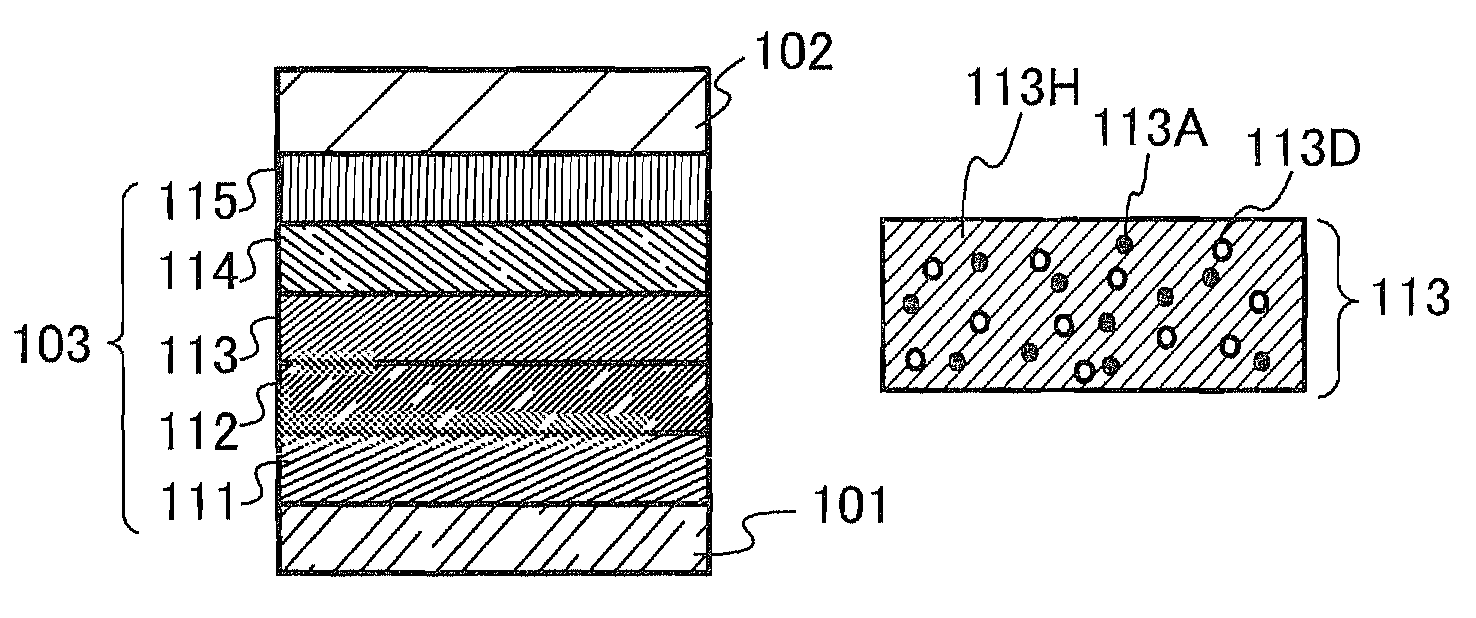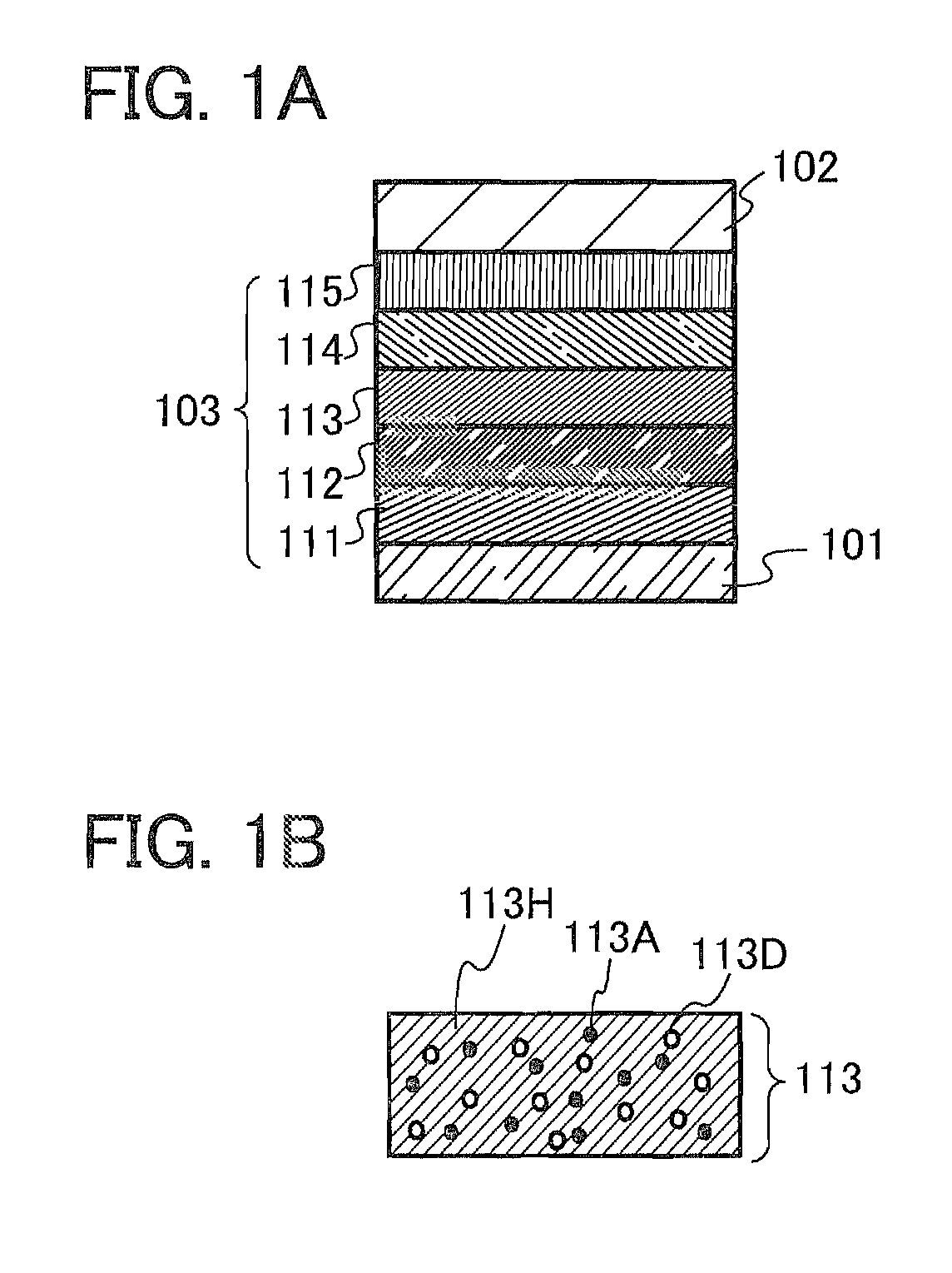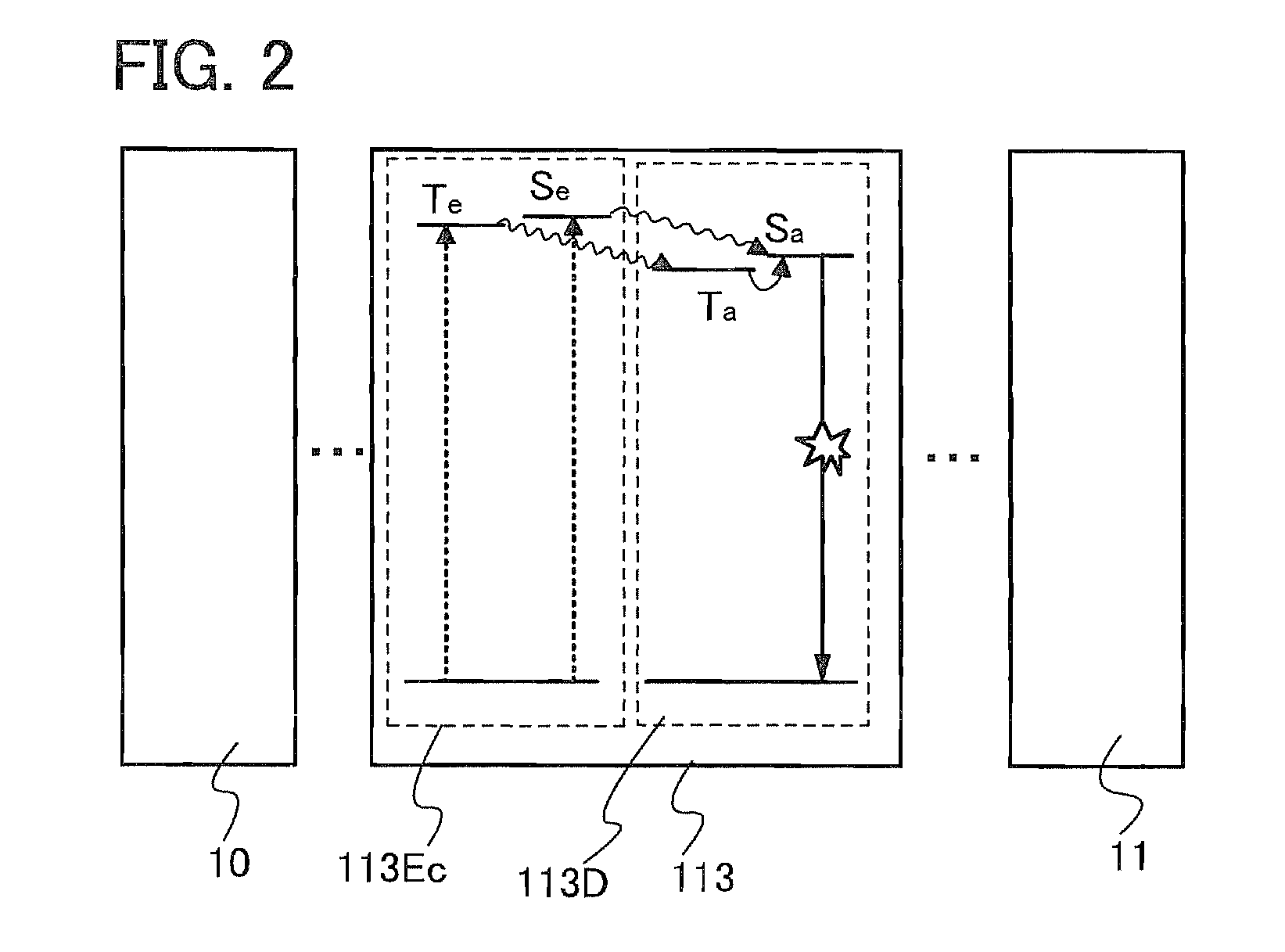Light-emitting element, light-emitting device, display device, electronic device, and lighting device
a technology of light-emitting devices and light-emitting elements, which is applied in the direction of semiconductor devices, solid-state devices, thermoelectric devices, etc., can solve the problem of difficult to achieve efficient energy transfer using ordinary host molecules, and achieve the effect of reducing power consumption and high emission efficiency
- Summary
- Abstract
- Description
- Claims
- Application Information
AI Technical Summary
Benefits of technology
Problems solved by technology
Method used
Image
Examples
embodiment 1
[0055]In a light-emitting element in which a substance exhibiting thermally activated delayed fluorescence (TADF) is used as a light-emitting substance, light emission occurs through the following energetic process. Note that a molecule providing excitation energy (an energy donor) is referred to as a host molecule, while the substance exhibiting TADF (an energy acceptor) is referred to as a guest molecule.
[0056](1) The case where an electron and a hole are recombined in a guest molecule, and the guest molecule is excited (direct recombination process).
[0057](1-1) When the excited state of the guest molecule is a singlet excited state, the guest molecule emits fluorescence.
[0058](1-2) When the excited state of the guest molecule is a triplet excited state, the guest molecule undergoes reverse intersystem crossing to a singlet excited state by absorbing energy (mainly heat) and emits fluorescence.
[0059]In the direct recombination process in (1), when the efficiency of reverse intersy...
embodiment 2
[0120]In this embodiment, a detailed example of the structure of the light-emitting element described in Embodiment 1 will be described below with reference to FIGS. 1A and 1B.
[0121]A light-emitting element in this embodiment includes, between a pair of electrodes, an EL layer including a plurality of layers. In this embodiment, the light-emitting element includes the first electrode 101, the second electrode 102, and the EL layer 103 which is provided between the first electrode 101 and the second electrode 102. Note that the following description in this embodiment is made on the assumption that the first electrode 101 functions as an anode and that the second electrode 102 functions as a cathode. In other words, when a voltage is applied between the first electrode 101 and the second electrode 102 so that the potential of the first electrode 101 is higher than that of the second electrode 102, light emission can be obtained.
[0122]Since the first electrode 101 functions as the ano...
embodiment 3
[0151]In this embodiment, a light-emitting device including the light-emitting element described in Embodiment 1 or 2 will be described.
[0152]In this embodiment, the light-emitting device manufactured using the light-emitting element described in Embodiment 1 or 2 is described with reference to FIGS. 3A and 3B. Note that FIG. 3A is a top view of the light-emitting device and FIG. 3B is a cross-sectional view taken along the lines A-B and C-D in FIG. 3A. This light-emitting device includes a driver circuit portion (source line driver circuit) 601, a pixel portion 602, and a driver circuit portion (gate line driver circuit) 603, which are to control light emission of a light-emitting element 618 and illustrated with dotted lines. Moreover, a reference numeral 604 denotes a sealing substrate; 625, a drying agent; 605, a sealing material; and 607, a space surrounded by the sealing material 605.
[0153]Reference numeral 608 denotes a wiring for transmitting signals to be input to the sourc...
PUM
 Login to View More
Login to View More Abstract
Description
Claims
Application Information
 Login to View More
Login to View More - R&D
- Intellectual Property
- Life Sciences
- Materials
- Tech Scout
- Unparalleled Data Quality
- Higher Quality Content
- 60% Fewer Hallucinations
Browse by: Latest US Patents, China's latest patents, Technical Efficacy Thesaurus, Application Domain, Technology Topic, Popular Technical Reports.
© 2025 PatSnap. All rights reserved.Legal|Privacy policy|Modern Slavery Act Transparency Statement|Sitemap|About US| Contact US: help@patsnap.com



